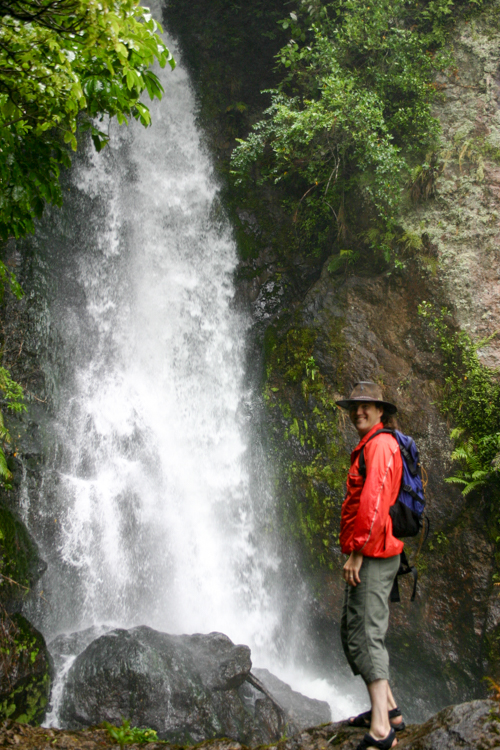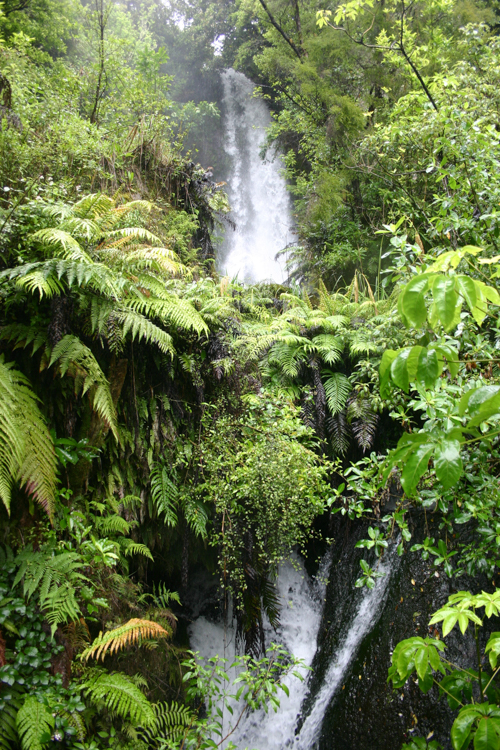The town of Rotorua straddles the geologically active fault-line that runs down through North Island New Zealand. Driving in, the first thing that we noticed was the heavy pall of steam that hung over it. The next thing that we noticed was the pungent sulphurous smell.
Our first stop was the Buried Village, inundated by mud in 1886 when the local volcano blew its top in a spectacular display of fire and storm. Up until then, the town had been a fashionable Victorian tourist spot because of the nearby pink and white terraces, now destroyed, and so the event was well recorded both by the local press and by the diaries of visiting Englishmen. Certainly there was enough fascinating detail to make an interesting museum, culminating in a walk among the now excavated buildings.
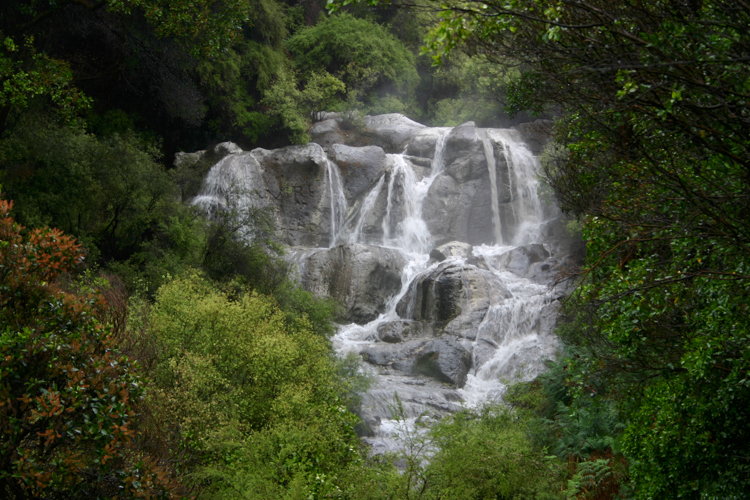
Hot waterfall in the rain forest
Possibly the highlight of the sunken village was its 40 metre hot waterfall, probably more spectacular than usual on our visit due to the continuous heavy rain.
The path to the fall was curious in that it was guarded by fierce signs warning of heart attacks and falling children, when in fact even with water cascading down the steps, it was just a gentle stroll which Bronwyn negotiated in flip-flops.
By the time we got back to the start, we were soaked through and quite cold, so it was just as well that we had booked ourselves into a hot mud bath and spa.
Hell’s Gate Thermal Valley
Hell’s Gate, in another part of Rotorua, is an area of volcanic mud pools. After a slightly dubious lunch in the tourist cafeteria, we ventured out into the continuing rain to explore the sights.
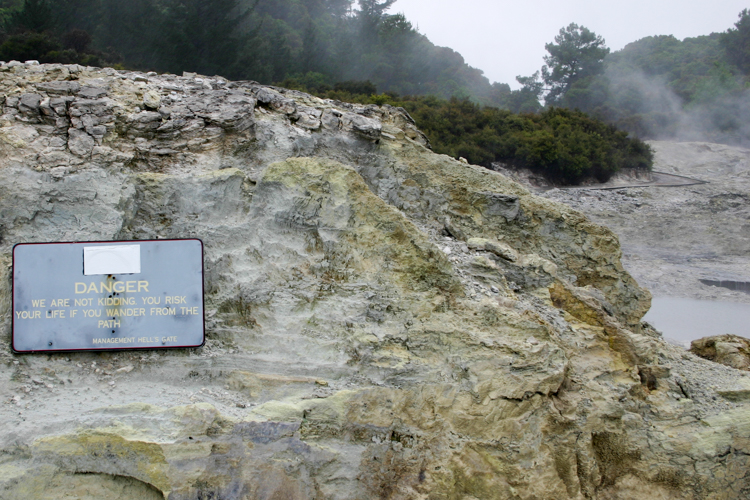
Do not stray from the path
The different pools and features are packed side-by-side in a large field of mud and rock, with footpaths winding between them. Each has its own temperature, colour, and character, and many have stories associated with them. For instance, Hurutini was named after a Maori princess, victim of an abusive husband, who killed herself by jumping into it. Hell’s Gate itself is the largest boiling whirlpool in the country, of unknown depth and a constant 98C. The Inferno owes both its gunmetal colour and its superheated temperature to a suspension of graphite particles, and the Cooking Pool was once used by the local Maori as a kind of bain-marie.
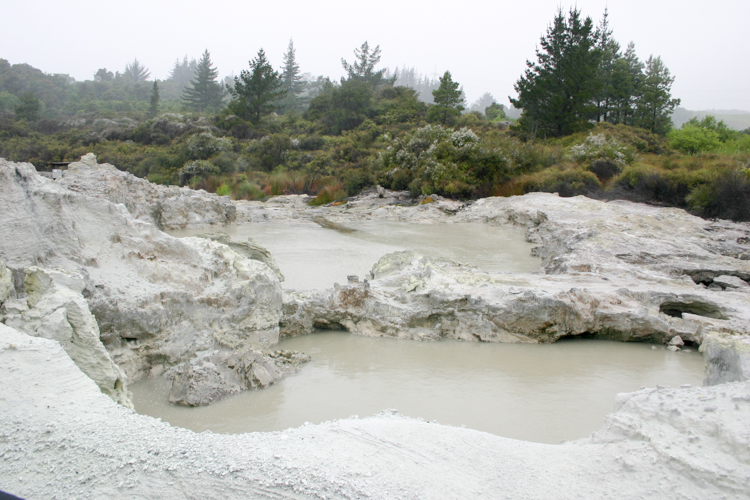
Hells Gate pool
We had already got used to the sulphurous smell that had assaulted us the day before, and as the wind and the rain picked up, we welcomed the occasional hot breeze that blew off one bubbling pool or the other.
The Mud Volcano had built a man-high cone around a fizzing crater.
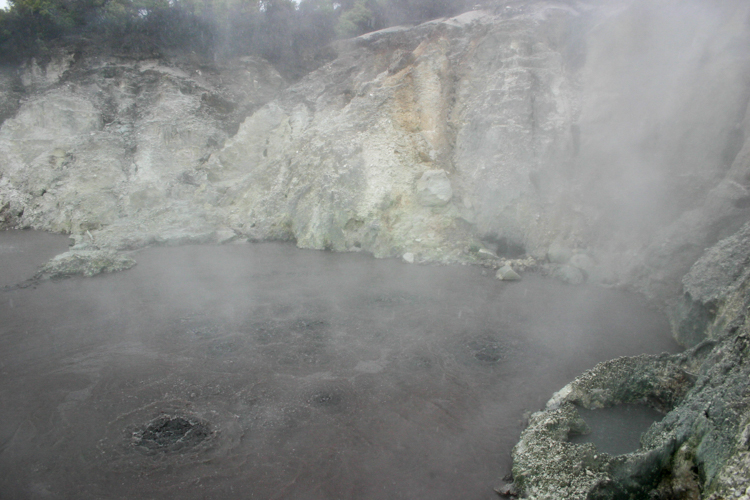
Mud Volcano
The Steam Cliff boiled and, it is said, occasionally spits gouts of water several metres into the air (although it wasn’t doing that while we passed by). The twin pools Sodom and Gomorrah grumbled ominously to each other as we struggled past, cheap umbrella bending and blowing in the wind, often becoming more of a liability than an asset.
Hell’s Gate Spa and Mud Bath
We packed all our clothes into plastic boxes, and were shown by the cheery Maori attendant to our personal mud bath, screened off by rush matting walls. A rectangular hole in the ground contained hot water piped from the mud fields, and a thin layer of the mud itself. The attendant hosed in a bit of cold to bring the temperature down to a bearable level, and then we lazed around in the water and smothered each other in the silky mud.
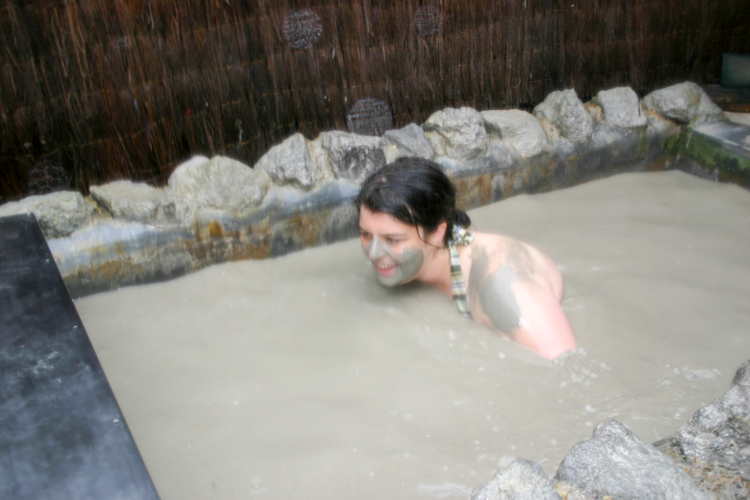
Hot mud bath
It was very relaxing but also quite hot, so when our allotted twenty minutes was up, we willingly sluiced down with ice cold water from the hose.
From the bath, we went straight into the warm spa, which featured an almost scalding hot waterfall that was wonderful to lie under as we straightened the travel kinks out of our bodies.
This was a more public pool, and other people came and went until finally, reluctantly, we climbed out for a final shower, feeling all floppy and relaxed.
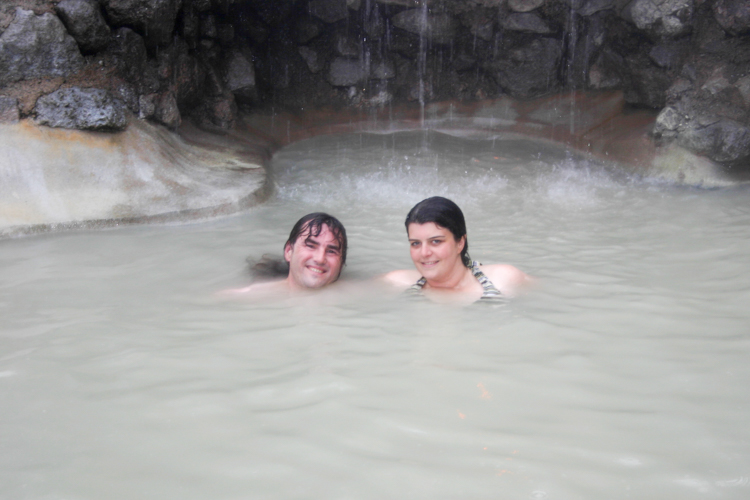
Natural hot spa
Before going into the spa, we had been warned to remove all silver jewellery, in case it got tarnished by the sulphur. That night, safely showered (and after removing an amazing amount of crystallised mineral from our hair), we put our rings back on. In the morning, we woke to the vivid stench of old pond water, and noticed that all the silver had gone completely black from the remaining residues in our skin.
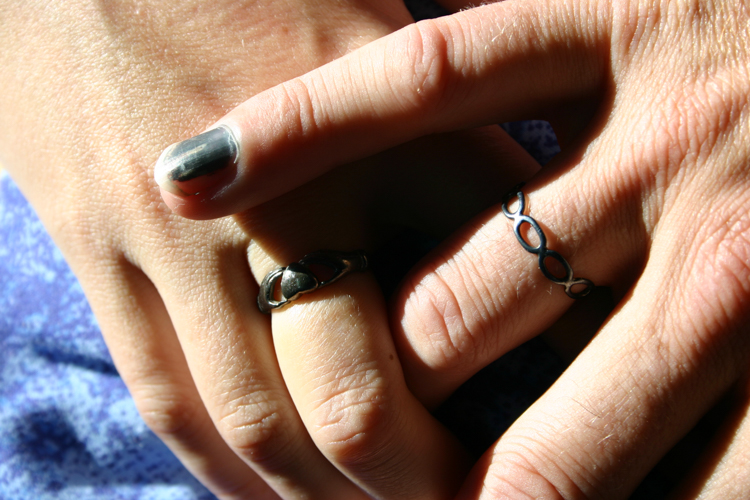
Blackened silver. The bruised nail is from something else!
Lady Knox Geyser
By means of some manipulation with old rags and soap, the Lady Knox Geyser is persuaded to erupt each morning at 10:15am. We actually got there at 10:45, in time to encounter streams of buses, cars and camper-vans coming in the opposite direction. However, when we got to the site itself, the geyser was still quite impressively erupting, with the added bonus that the surrounding wooden amphitheatre, built to hold hundreds of spectators, was almost empty.
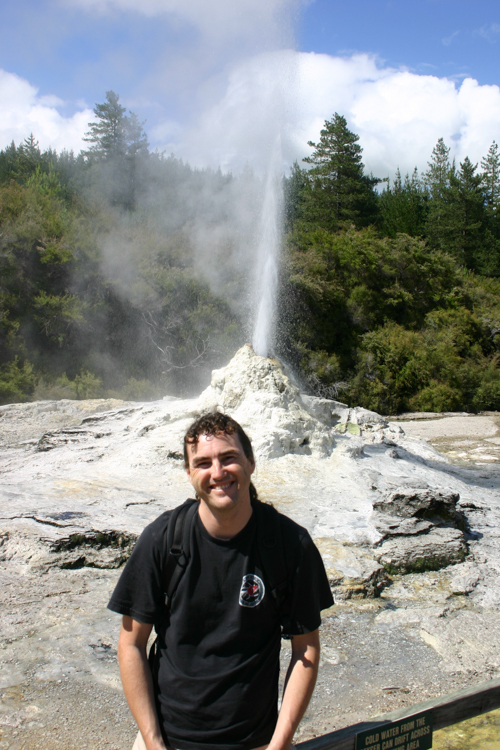
Reinhard at the Lady Knox geyser 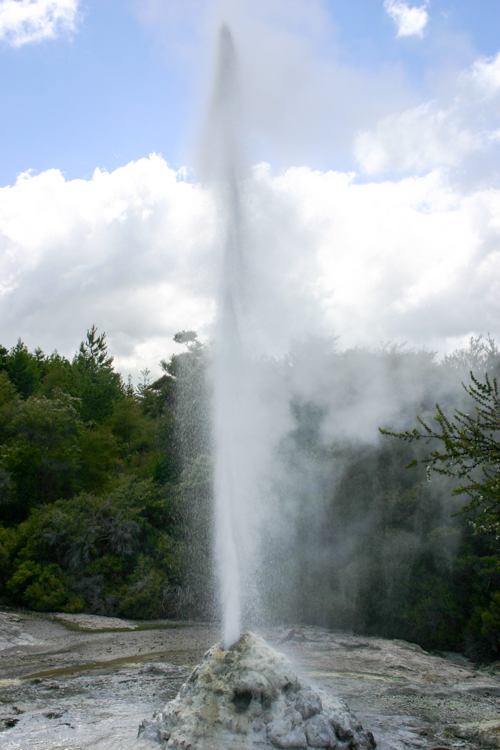
Waimangu Volcanic Valley
In the spring of 1886, the area around Mount Tarawera was a popular tourist destination, due in the main to two spectacular geological features known respectively as the White and Yellow Terraces, a set of brightly coloured cliffs with steaming hot water pools and falls. There are many pictures of parasol-bearing ladies in crinoline dresses perambulating around on the rocks.
Then in June of that year, the mountain blew its top and ripped a fault line 16 kilometres long that destroyed the existing lake system, along with seven small villages and both terraces. When the magma hit the hydrothermal springs, the resultant explosion hurled rock, dust and and sand some 11 kilometres into the air, raining down in a boiling flood on the surrounding countryside. All life, both animal and vegetable, was destroyed in the cataclysm, so the riot of greenery seen today is all new growth.
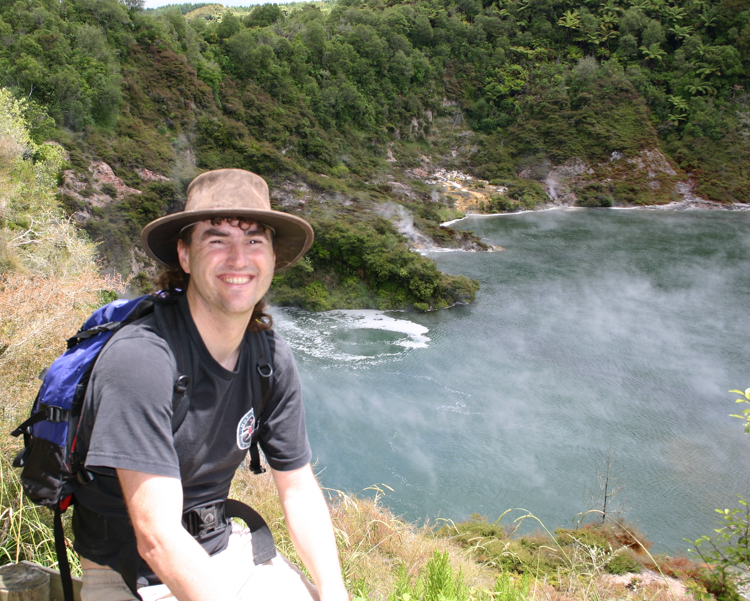
Frying Pan Lake in Echo Crater
Close to Frying Pan Lake, so called because of the crackling and bubbling sounds that it makes, the cataclysm briefly created the worlds biggest geyser, which played from 1900 to 1904, although nothing remains of it today.
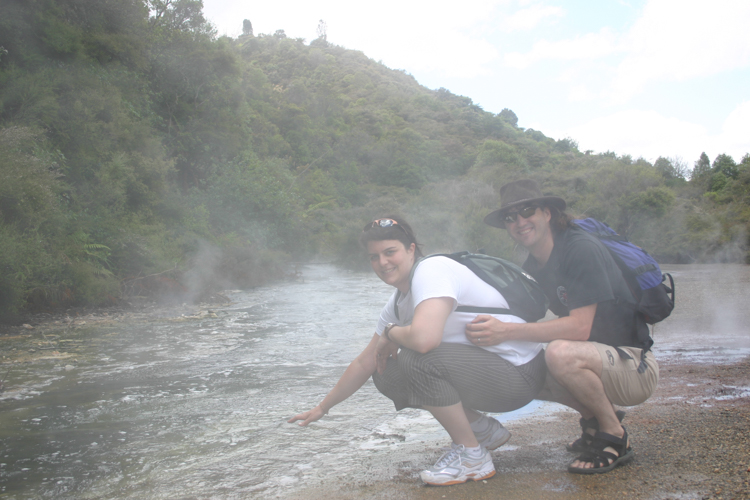
A hot water creek
Inferno Crater Lake is the largest geyser-like feature in the world, although the geyser itself cannot be seen because it plays at the bottom of the lake. However, its results are seen in the curious cyclical water level which follows a regular pattern over a period of about six weeks. The water is highly acidic, sometimes around pH 2.1, and at up to 30 metres deep and 80 centigrade, at which temperature it overflows to feed the hot water features further downstream.
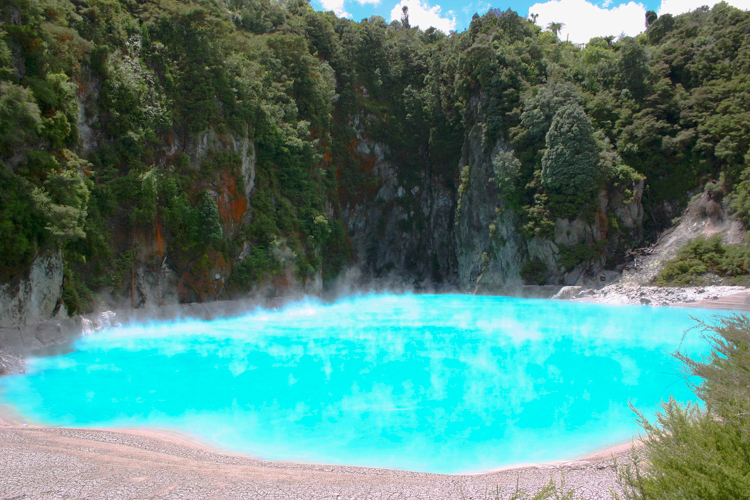
Inferno crater lake
One of these features is Warbrick Terrace. The colourful shallows are caused not only by crystallising minerals, but also by various red and green algae that colonise the pools.
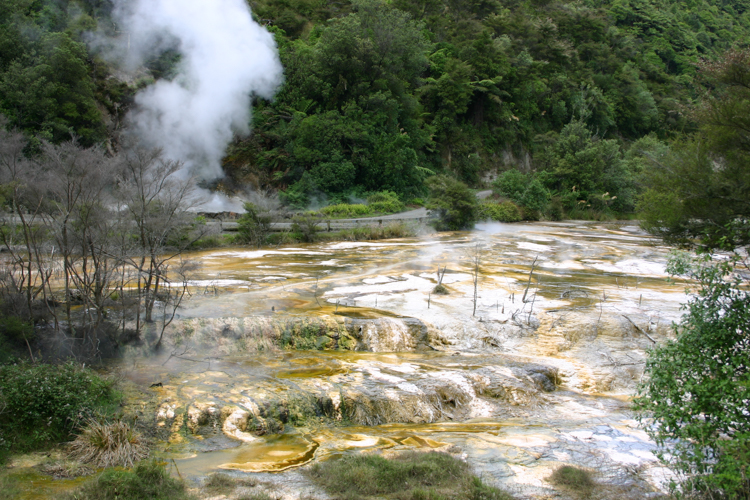
Warbrick Terrace
At the far end of the walk, a boat was waiting to take us out onto Lake Rotomohana. After the 1886 eruption, the resultant crater slowly filled with rainwater until it covered an area twenty times that of the original lakes, with a water level 40 metres higher.
On the one hand, this enormous mass of water has covered over almost all of the interesting scars, so that much of the tour comprises we are now floating over the site of…. On the other hand, the captain gave us a fascinating history of the explosion and of the subsequent recovery of the flora and fauna.
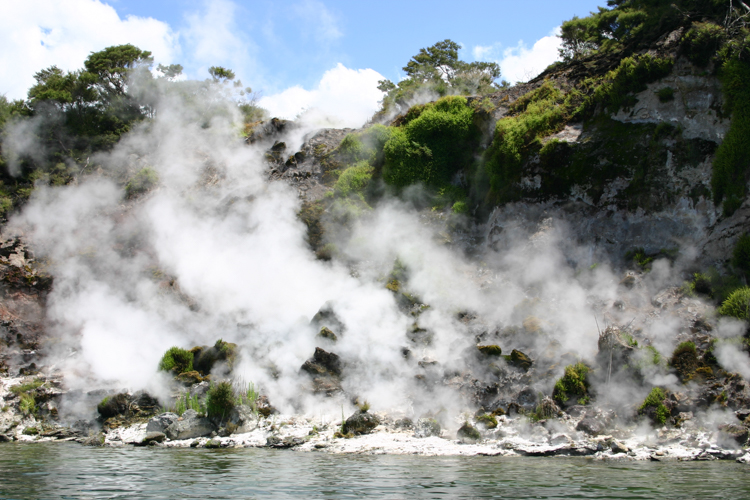
Boiling water at Lake Rotomahana
Wai-O-Tapu
The Wai-O-Tapu thermal area covers some 18 square kilometres and is covered with collapsed craters, cold and boiling pools of mud and water, and steaming fumaroles. Its a pretty spectacular place, with all sorts of colours and formations, and over an hours worth of walking tracks between them.
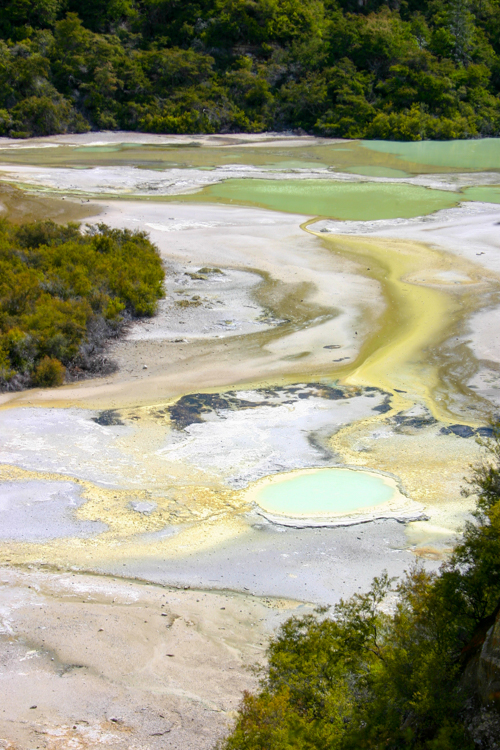
Oyster Pool 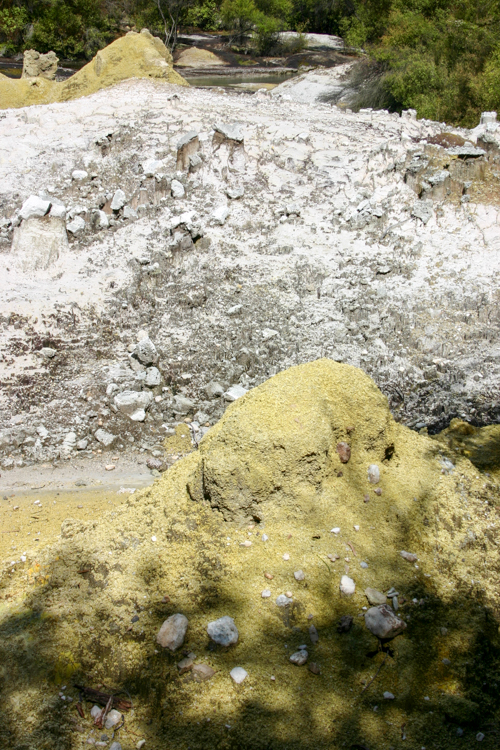
Sulphur mounds
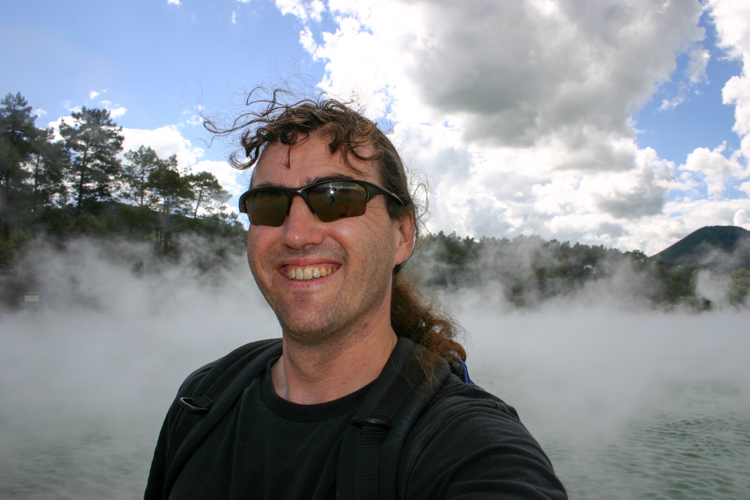
Reinhard at the Champagne Pool
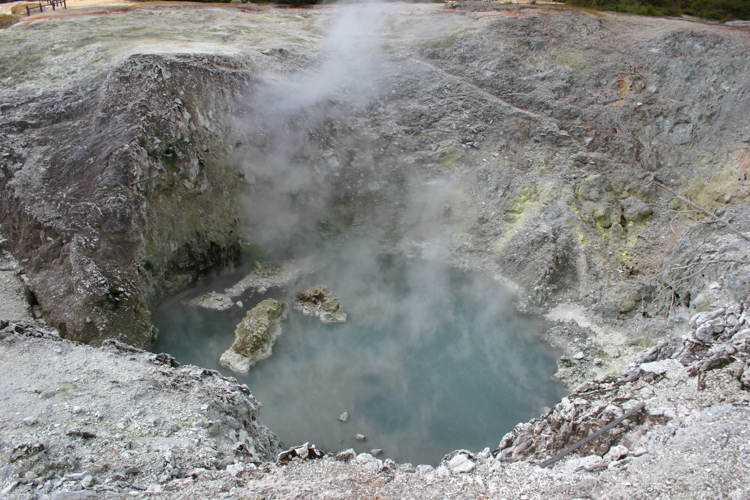
Bird’s Nest Crater 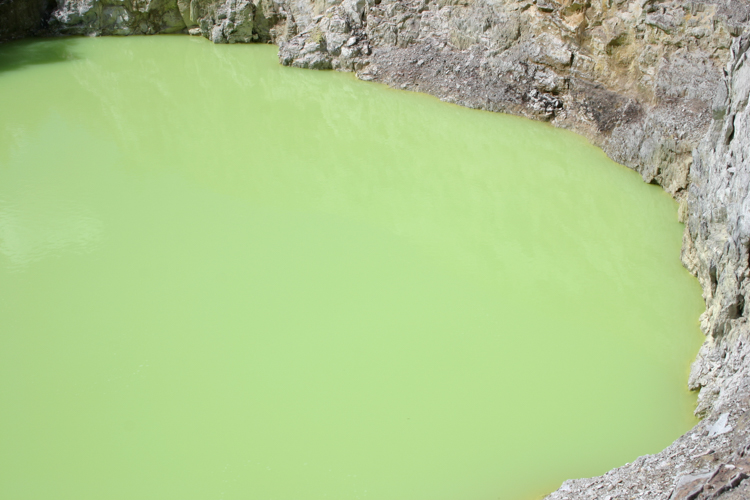
Devil’s Bath
Boiling Mud Pool
Finally, just before we left the region, we stopped at a mud pool by the side of the road. We sat on the fence and listened as it made satisfying cooking noises and burped large gouts of mud several feet into the air, all accompanied by the distinct smell of hot dog sausages.
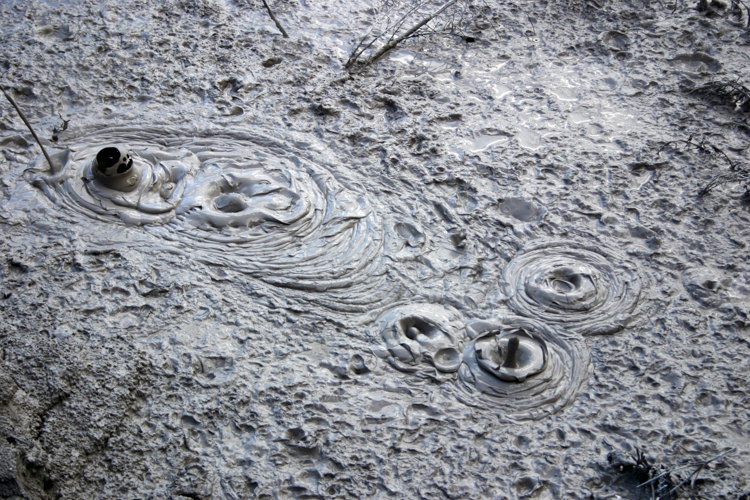
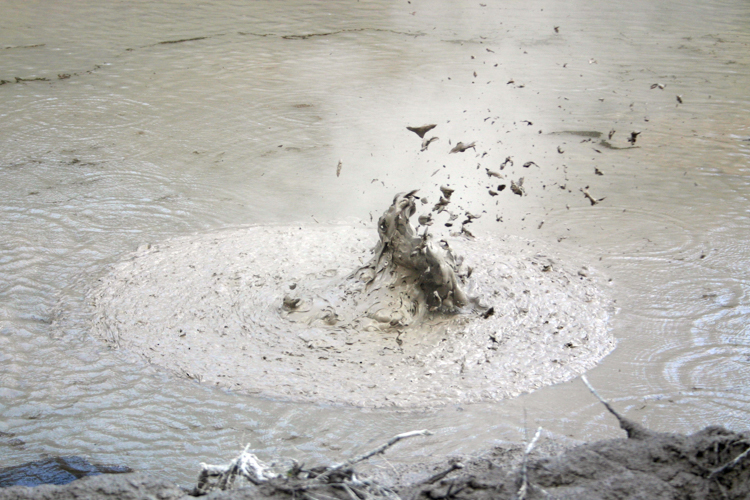
Mud pool plop
A very curious part of the world indeed.
